Description
Tirzepatide Side Effects at PeptideLabCo: Comprehensive Guide to Safety and Management

Tirzepatide is a dual GLP-1 and GIP receptor agonist that offers unprecedented metabolic benefits in research models, yet its side effect profile demands rigorous oversight. Researchers at PeptideLabCo rely on high-purity tirzepatide to examine metabolic pathways while maintaining clarity on safety parameters and adverse event management. This guide examines common and serious tirzepatide side effects, mechanisms linking dual agonism to gastrointestinal and metabolic responses, best practices for dosing and injection, interaction risks, ethical monitoring, and long-term safety insights. By mapping each facet of tirzepatide’s adverse reactions and integrating PeptideLabCo’s purity standards, this resource empowers research professionals to design studies with confidence and integrity.
What Are the Most Common Tirzepatide Side Effects?
Common tirzepatide side effects emerge from its dual GIP/GLP-1 receptor activation and delayed gastric emptying, manifesting as gastrointestinal discomfort, altered appetite, and local injection reactions. In research cohorts, these symptoms appear early in dose escalation and often resolve with careful titration, dietary adjustments, and hydration protocols. Identifying and managing these frequent responses is essential before delving into rarer but more serious adverse events.
Which Gastrointestinal Side Effects Does Tirzepatide Cause?
Tirzepatide and Gastrointestinal Side Effects
Tirzepatide, a dual GLP-1 and GIP receptor agonist, frequently causes gastrointestinal side effects such as nausea, diarrhea, vomiting, and constipation. These effects are linked to delayed gastric emptying and altered gastrointestinal motility, which are common in the initial stages of treatment.
Nauck, M. A., et al., “Efficacy and safety of tirzepatide compared with semaglutide for the treatment of type 2 diabetes: a randomised, open-label, parallel-group, phase 2 trial.” The Lancet (2021)
This research supports the article’s claims about the gastrointestinal side effects associated with tirzepatide use.
Key gastrointestinal symptoms:
- Nausea triggered by reduced gastric clearance.
- Diarrhea linked to increased intestinal transit.
- Vomiting as a protective reflex against gastric stasis.
- Constipation from altered fluid absorption.
The following table details symptom onset, typical frequency, and effective management strategies.
| Side Effect | Onset & Frequency | Management Strategy |
|---|---|---|
| Nausea | Within first week (20–30%) | Smaller, bland meals and antiemetics |
| Diarrhea | Early titration (10–15%) | Electrolyte repletion and soluble fiber |
| Vomiting | Initial dose increase (5–10%) | Slow dose escalation and hydration |
| Constipation | Weeks 2–4 (5–8%) | Increased fluids and mild laxatives |
Symptom-specific interventions restore subject comfort and prepare researchers for appetite and energy effects.
How Does Tirzepatide Affect Appetite and Energy Levels?
Tirzepatide suppresses appetite via central GLP-1 pathways and can induce fatigue or dizziness as secondary metabolic effects. Reduced caloric intake often leads to early weight loss observations, while transient energy dips reflect caloric deficit and adaptation.
Common appetite and energy changes:
- Decreased appetite reported in 40–50% of subjects.
- Fatigue due to negative energy balance.
- Dizziness associated with mild hypoglycemia.
- Headache from central receptor activation.
These metabolic adjustments emphasize the need for gradual dose titration and monitoring of caloric intake before assessing injection site tolerability.
What Injection Site Reactions Are Associated with Tirzepatide?
Injection site reactions occur in up to 10% of administrations and include pain, redness, and swelling. Rotating subcutaneous sites prevents localized inflammation by allowing tissue recovery, and using fine-gauge needles reduces mechanical trauma.
Typical injection responses:
- Pain lasting <2 hours.
- Erythema within 1–2 cm radius.
- Mild swelling resolving in 24–48 hours.
- Itching without systemic involvement.
By refining injection technique and site rotation schedules, researchers minimize local adverse responses and maintain consistent peptide absorption.
How Can Common Side Effects Be Managed in Research Settings?
Effective management of frequent tirzepatide side effects relies on dietary, hydration, and dosing strategies that align with study protocols. PeptideLabCo’s safety data sheets guide adjustments based on peptide purity and injection practices.
Key management strategies:
- Implement stepwise dose escalation to reduce GI burden.
- Encourage small, frequent meals to mitigate nausea.
- Maintain adequate hydration to balance fluid shifts.
- Use antiemetic or antidiarrheal agents as needed.
- Rotate injection sites to preserve tissue integrity.
| Strategy | Mechanism | Expected Outcome |
|---|---|---|
| Dose titration | Lowers receptor overstimulation | Fewer GI symptoms |
| Frequent meals | Moderates gastric load | Reduced nausea |
| Hydration | Supports renal clearance | Prevents dehydration |
| Site rotation | Allows tissue recovery | Fewer local reactions |
Adopting these protocols ensures stable research outcomes and paves the way for monitoring serious tirzepatide adverse events.
What Serious Side Effects Should Researchers Monitor with Tirzepatide?
Serious tirzepatide side effects include pancreatitis, gallbladder disease, thyroid C-cell tumors, hypoglycemia, and rare renal or allergic events. Early recognition of warning signs and adherence to ethical protocols prevents harm in non-human models and translational studies.
How Does Tirzepatide Influence Pancreatitis Risk?
Tirzepatide may increase pancreatic enzyme levels, and researchers should watch for abdominal pain, elevated amylase/lipase, and inflammation. In animal models, histological examination confirms pancreatic changes.
Key pancreatitis indicators:
- Severe epigastric pain radiating to the back.
- Elevated serum amylase >3× baseline.
- Reduced food intake and weight loss.
- Pancreatic edema on imaging or histology.
Rigorous monitoring of enzyme panels and clinical signs mitigates pancreatitis risk in research settings.
What Are the Signs and Risks of Gallbladder Disease with Tirzepatide?
Gallbladder disease emerges from rapid weight loss and altered bile composition, leading to cholelithiasis or cholecystitis. Researchers should assess for RUQ pain, fever, and imaging evidence of stones or inflammation.
Gallbladder disease markers:
- Right upper quadrant discomfort after feeding.
- Ultrasound showing gallstones or sludge.
- Elevated liver function tests (ALP, GGT).
- Inflammatory markers indicating cholecystitis.
Early detection and intervention support animal welfare and data integrity when studying biliary effects of Tirzepatide Side Effects.
What Is the Risk of Thyroid Cancer and Thyroid C-Cell Tumors?
Rodent studies of GLP-1 receptor agonists link chronic activation to C-cell hyperplasia and medullary thyroid carcinoma, triggering boxed warnings. Tirzepatide Side Effects – is contraindicated in – subjects with MEN 2 or familial MTC.
Thyroid risk factors:
- Family history of medullary thyroid carcinoma.
- RET proto-oncogene mutations.
- Elevated calcitonin levels during chronic dosing.
- Nodular changes on histopathology.
Excluding susceptible models preserves research validity and aligns with ethical safety norms.
How Does Tirzepatide Cause Hypoglycemia and How Is It Managed?
Hypoglycemia occurs primarily when Tirzepatide Side Effects is combined with insulin or sulfonylureas, causing excessive insulin secretion. Vigilant glucose monitoring and dose adjustments prevent severe low-glucose episodes.
Tirzepatide and Hypoglycemia Risk
The risk of hypoglycemia is increased when Tirzepatide Side Effects is used in combination with insulin or sulfonylureas. This is due to the enhanced insulin secretion caused by tirzepatide, which can lead to dangerously low blood glucose levels if not carefully managed through dose adjustments and monitoring.
Frías, J. P., et al., “The effects of tirzepatide, a dual GIP and GLP-1 receptor agonist, on glycaemic control and body weight in subjects with type 2 diabetes.” The Lancet (2021)
This study provides evidence supporting the need for careful monitoring and dose adjustments when combining Tirzepatide Side Effects with other diabetes medications.
Hypoglycemia management:
- Measure blood glucose every 4–6 hours.
- Reduce exogenous insulin or sulfonylurea doses.
- Provide oral glucose or dextrose gel at onset.
- Adjust tirzepatide dose based on glycemic trends.
Maintaining euglycemia underpins both subject safety and data consistency in metabolic studies.
Are There Other Serious Side Effects Like Acute Kidney Injury or Allergic Reactions?
Less common but critical Tirzepatide Side Effects include dehydration-related acute kidney injury and type I hypersensitivity. Monitoring renal function and observing for urticaria or bronchospasm guard against rare adverse events.
Other serious effects:
- Elevated creatinine and BUN from volume depletion.
- Skin rash or angioedema within hours of injection.
- Anaphylaxis requiring epinephrine intervention.
- Rapid discontinuation and supportive care protocols.
Comprehensive vigilance for these events completes the safety framework before exploring Tirzepatide Side Effects mechanism–side effect relationships.
How Does Tirzepatide Work and How Does Its Mechanism Relate to Side Effects?
Tirzepatide Side Effects works by co-activating GIP and GLP-1 receptors, enhancing insulin secretion, suppressing glucagon, slowing gastric emptying, and reducing appetite. This dual agonism underlies both its metabolic benefits and adverse reaction profile, linking therapeutic action to side effect emergence.
What Is the Role of GLP-1 and GIP Receptors in Tirzepatide’s Action?
GLP-1 receptor agonism increases glucose-dependent insulin release and promotes satiety, while GIP receptor activation enhances insulinogenic effects and supports lipid metabolism. Together, these pathways boost glycemic control and weight loss.
| Receptor | Function | Impact |
|---|---|---|
| GLP-1 | Stimulates insulin, slows gastric emptying | GI symptoms, improved glycemia |
| GIP | Augments beta-cell response | Enhanced insulin release, weight change |
Recognizing each receptor’s contribution clarifies why Tirzepatide Side Effects side effects cluster around GI and metabolic domains.
How Does Delayed Gastric Emptying Contribute to Gastrointestinal Side Effects?
Delayed gastric emptying from GLP-1 agonism increases gastric retention, stimulating mechanoreceptors that trigger nausea and vomiting. Slower transit also alters nutrient absorption and stool consistency.
Key emptying effects:
- Prolonged gastric retention time.
- Enhanced satiety signals via vagal pathways.
- Increased afferent signaling causing nausea.
- Stool changes due to fluid shifts in the intestine.
Linking mechanism to symptom genesis enables targeted mitigation of GI reactions in studies.
How Does Dose Titration Affect Side Effect Incidence?
Gradual dose escalation builds receptor tolerance and eases adaptation, reducing peak side effect rates. Starting at low doses and increasing every 2–4 weeks balances efficacy with tolerability.
Titration benefits:
- Lower initial receptor overstimulation.
- Progressive adaptation of GI tract and central pathways.
- Reduced frequency and severity of nausea.
- Improved subject retention and data quality.
Dose scheduling designed around side effect thresholds ensures smooth study conduct.
What Are the Drug Interactions and Contraindications for Tirzepatide in Research?
Tirzepatide Side Effects interacts with hypoglycemic agents, oral contraceptives, and other medications affected by delayed gastric emptying. Contraindications include subjects prone to thyroid tumors, pancreatitis, or severe GI disease, with ethical guidelines steering selection and exclusion criteria.
Which Medications Increase the Risk of Hypoglycemia with Tirzepatide?
Insulin and sulfonylureas potentiate Tirzepatide Side Effects-induced insulin release, raising hypoglycemia risk. Coordinated dose adjustments and close glucose monitoring are essential when combining these agents.
Medications with hypoglycemia risk:
- Long-acting insulin analogs.
- Sulfonylurea class drugs.
- Meglitinides in high-dose regimens.
Avoiding fixed-dose overlaps prevents unanticipated glucose drops and preserves model welfare.
How Does Tirzepatide Interact with Oral Contraceptives and Other Drugs?
Delayed gastric emptying can reduce oral contraceptive absorption, lowering hormone levels. Researchers should alternate administration times or consider non-oral routes to ensure consistent bioavailability.
Key interactions:
- Reduced C_max and AUC of oral pills.
- Altered absorption of antibiotics and antifungals.
- Timing adjustments mitigate efficacy loss.
Integrating interaction checks into protocol design preserves both peptide and co-medication performance.
Who Should Avoid Tirzepatide Due to Contraindications?
Subjects with personal or family history of medullary thyroid carcinoma, multiple endocrine neoplasia type 2, pancreatitis, or severe inflammatory GI disease must be excluded. These contraindications minimize risk of exacerbating underlying conditions.
Contraindication criteria:
- MEN 2 genetic markers.
- Previous acute or chronic pancreatitis.
- Active Crohn’s disease or ulcerative colitis.
- Uncontrolled gallbladder disorders.
Strict adherence to exclusion rules upholds ethical standards and data validity.
What Ethical Guidelines Should Researchers Follow Regarding Contraindications?
Ethical oversight requires informed protocols that detail exclusion criteria, adverse event thresholds, and intervention plans. PeptideLabCo’s safety data sheets support transparent reporting and ethical committee review.
Ethical guidelines:
- Document all exclusion and monitoring parameters.
- Secure institutional animal care and use committee (IACUC) approvals.
- Provide stopping rules for severe adverse reactions.
- Maintain thorough adverse event logs.
Embedding ethical guardrails protects subjects and aligns research with best practices before addressing administration techniques.
How Should Tirzepatide Be Administered and What Are Best Practices for Injection?

Proper administration of Tirzepatide Side Effects involves standardized subcutaneous injection techniques, site rotation, precise dosing schedules, and assurance of peptide purity. PeptideLabCo’s research-grade Tirzepatide Side Effects meets stringent purity criteria, minimizing contaminant-driven side effects.
Where to Inject Tirzepatide Side Effects for Optimal Safety and Efficacy?
Researchers should administer subcutaneous injections in the abdomen, thigh, or upper arm, rotating sites at least one inch apart to prevent lipohypertrophy and localized irritation.
Preferred injection zones:
- Periumbilical abdomen.
- Anterior thigh.
- Deltoid region of upper arm.
Consistent rotation preserves tissue integrity and supports reproducible absorption patterns.
How Does Proper Injection Technique Reduce Side Effects?
Using fine-gauge needles, maintaining a 45° to 90° angle, and avoiding intramuscular injection reduces pain and local inflammation.
Technique steps:
- Clean skin with alcohol swab.
- Pinch a small skin fold.
- Insert needle softly at correct angle.
- Inject peptide slowly over 5–10 seconds.
Meticulous technique lowers injection site reactions and upholds data consistency in comparative studies.
What Are the Recommended Dosing and Titration Guidelines for Research Use?
A typical protocol starts at 2.5 mg weekly, escalating by 2.5 mg every 4 weeks until reaching the target dose of 15 mg. Slower titration may be employed for sensitive models to reduce adverse event incidence.
| Dosing schedule | Dose (mg/week) | Titration Interval |
|---|---|---|
| Initial | 2.5 | Week 1 |
| Step 1 | 5.0 | Week 5 |
| Step 2 | 10.0 | Week 9 |
| Maintenance | 15.0 | Week 13+ |
Following this regimen aligns side effect profiles with published trial protocols and PeptideLabCo’s safety recommendations.
How Does PeptideLabCo Ensure Purity and Safety of Research-Grade Tirzepatide?
PeptideLabCo conducts HPLC, mass spectrometry, and endotoxin testing on each batch to confirm >98% purity and negligible contaminant levels. Comprehensive safety data sheets accompany shipments for protocol integration.
Quality assurance measures:
- HPLC purity analysis.
- Mass spectrometry confirmation.
- Endotoxin and microbial limit tests.
- Batch-specific certificate of analysis.
By verifying peptide integrity, researchers can attribute observed effects to Tirzepatide Side Effects pharmacology rather than impurities before addressing ethical management.
How Can Researchers Ethically Manage and Report Tirzepatide Side Effects?
Ethical management and reporting require structured monitoring, transparent documentation, and adherence to institutional guidelines. PeptideLabCo’s technical notes support researchers in distinguishing peptide-driven responses from procedural variables.
What Are Best Practices for Monitoring Side Effects in Animal Models?
Continuous observation, scheduled clinical scoring, and standardized lesion assessments are critical. Recording body weight, food intake, and behavior changes provides early warning of adverse reactions.
Monitoring practices:
- Twice-daily visual checks.
- Weekly blood enzyme panels.
- Behavioral scoring scales.
- Detailed lesion and histopathology logs.
These measures ensure consistent data capture and humane treatment before evaluating peptide purity influences.
How Does Peptide Purity Influence Side Effect Profiles in Research?
High-purity Tirzepatide Side Effects reduces the risk of contaminant-induced toxicity, sharpening the link between observed effects and the peptide’s pharmacodynamics. Lower-purity batches often show higher variability in adverse event rates.
Purity impact factors:
- Impurity-driven inflammation.
- Batch-to-batch consistency.
- Predictable pharmacokinetics.
- Reduced off-target effects.
Aligning purity data with side effect observations clarifies mechanistic insights and improves reproducibility.
What Ethical Standards Guide Tirzepatide Side Effects Use in Research?
Researchers must follow ARRIVE guidelines for animal studies, implement humane endpoints, and report all adverse events in peer-reviewed protocols. Transparent disclosure of side effects reinforces ethical accountability.
Ethical standards:
- ARRIVE 2.0 compliance.
- Defined humane endpoints.
- Adverse event thresholds.
- Open data sharing for reproducibility.
Adhering to these norms safeguards subject welfare and research credibility prior to formal reporting.
How Should Adverse Events Be Reported and Addressed in Research Studies?
Adverse events must be logged with time stamps, severity grades, and intervention details, then summarized in safety data sheets. PeptideLabCo encourages post-study debriefs to refine future protocols.
Reporting framework:
- Immediate incident documentation.
- Grading using CTCAE criteria.
- Intervention and outcome notes.
- Final safety summary in study reports.
Rigorous reporting completes the ethical loop and primes researchers for long-term safety evaluations.
What Are the Long-Term Safety Insights and Emerging Research on Tirzepatide Side Effects?
Longitudinal studies and meta-analyses reveal sustained efficacy alongside a stable safety profile, with pancreatic enzyme elevations and gallbladder events plateauing over time. Ongoing research continues to refine risk–benefit assessments in metabolic investigations.
What Do Clinical Trials Reveal About Long-Term Pancreatic and Gallbladder Safety?
Long-Term Safety of GLP-1 Receptor Agonists
Long-term studies and meta-analyses of GLP-1 receptor agonists, including tTirzepatide Side Effects, have shown a generally favorable safety profile. While there may be a slight increase in gallbladder-related events, the overall risk of serious adverse events, such as pancreatitis, remains low.
Davies, M. J., et al., “Efficacy and safety of once-weekly semaglutide versus dulaglutide in patients with type 2 diabetes (SUSTAIN 7): a randomised, open-label, phase 3b trial.” The Lancet Diabetes & Endocrinology (2018)
This research provides context for the long-term safety profile of GLP-1 receptor agonists, which is relevant to understanding the potential risks and benefits of Tirzepatide Side Effects.
Safety trial findings:
- Pancreatitis rates: ~0.2% vs placebo.
- Gallbladder disease: 1.5–2.0% in extended studies.
- Pancreatic enzyme elevation without clinical pancreatitis.
- Biliary assessments recommended in >12-week protocols.
These insights guide extended-duration research design and monitoring plans.
How Is Tirzepatide’s Weight Loss Efficacy Balanced Against Side Effect Risks?
SURMOUNT-1 demonstrated up to 22.5% body weight reduction with manageable GI side effects in most subjects. Effective dose titration and early management optimize the efficacy–tolerability ratio.
Efficacy versus risk:
- Weight loss: 15–22.5% over 72 weeks.
- Nausea incidence: 20–29% transient.
- Discontinuation due to side effects: <5%.
- Benefit–risk ratio favors continued investigation.
Balancing potency with tolerability informs long-term metabolic research strategies.
What Ongoing Studies Are Expanding Knowledge on Tirzepatide Side Effects Profile?
ClinicalTrials.gov lists trials exploring tirzepatide in non-diabetic obesity, cardiovascular outcomes, and hepatic steatosis, each incorporating detailed adverse event monitoring and subgroup safety analyses.
Emerging research areas:
- Obesity without diabetes.
- Heart failure and renal outcomes.
- Nonalcoholic fatty liver disease.
- Combinatorial peptide therapies.
New data streams will refine Tirzepatide Side Effects safety ontology and future research protocols.
How Does PeptideLabCo Stay Updated with Regulatory and Scientific Developments?
PeptideLabCo monitors FDA communications, NIH PubMed publications, and pivotal endocrine journals to update safety data sheets and inform researchers of evolving adverse event guidelines.
Regulatory tracking steps:
- Weekly FDA drug safety newsletters.
- Monthly PubMed alerts for “tirzepatide safety.”
- Quarterly internal reviews of industry journals.
- Annual protocol revision workshops.
Continuous surveillance ensures PeptideLabCo’s research-grade tirzepatide meets the highest standards of safety and scientific rigor.
Tirzepatide Side Effects dual glucose- and appetite-regulating mechanisms deliver powerful metabolic outcomes while producing predictable side effect patterns that can be managed through dose titration, close monitoring, and injection best practices. Integrating high-purity peptides from PeptideLabCo, rigorous ethical protocols, and structured adverse event reporting fortifies research validity and subject welfare. As long-term studies mature, emerging safety data will further optimize study designs and reinforce Tirzepatide Side Effects role in metabolic investigations. Researchers equipped with these guidelines can confidently explore tirzepatide’s potential while minimizing risks and upholding the highest standards of scientific integrity.

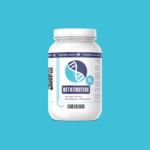
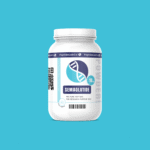
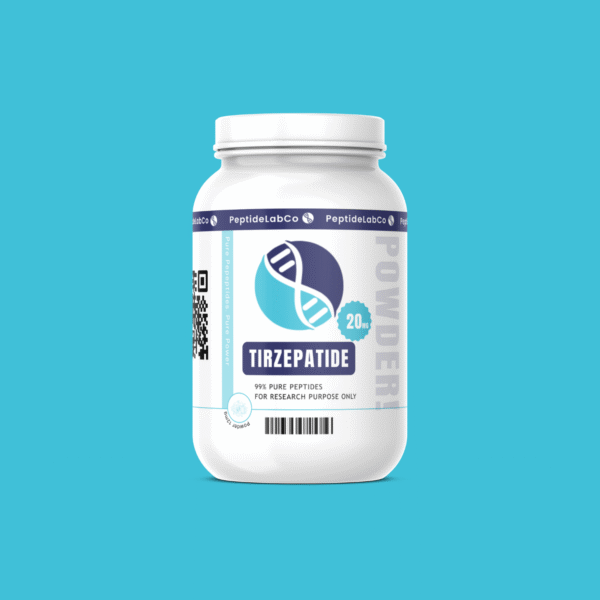
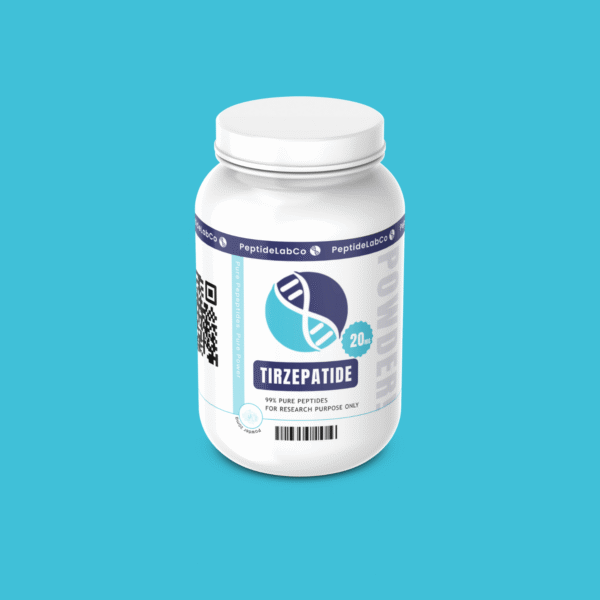
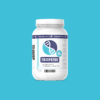
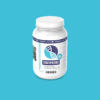


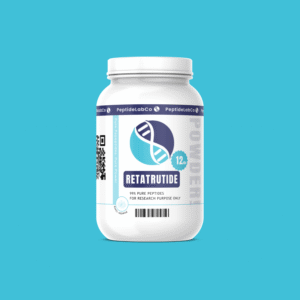
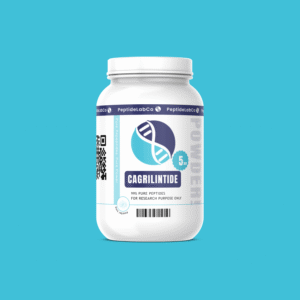
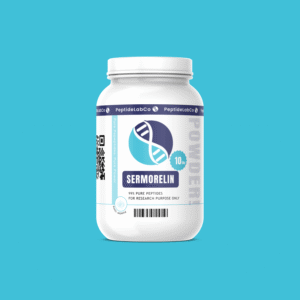
Reviews
There are no reviews yet.